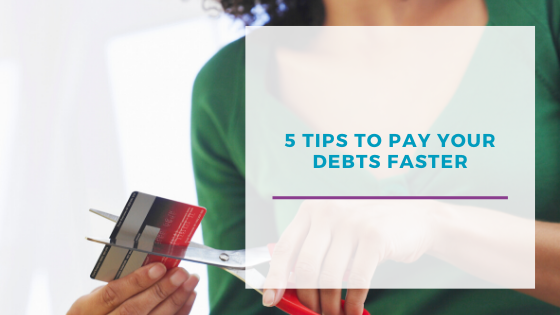It can feel completely overwhelming when your debts start to mount up and often, our instinct is to bury our heads in the sand and hope that the problem goes away.
Of course, this is the very worst thing that you can do – but the good news is that there are tons of great tactics out there that will help you to take back control of your finances and clear your debts faster.
1) Assess your debts
The first step to taking back control is to properly assess your financial situation. This can feel pretty scary, but it’s important to bite the bullet – you’ll feel so much better afterwards, promise!
Start by creating a list of all of your debts. The list should include:
• The company you owe money to
• The total outstanding amount
• Your monthly payment
• The interest rate for each debt
2) Assess your income and expenditure
Now you’ve got a good picture of what you owe, take a look at your overall income and expenditure. This could highlight areas where you may be able to save money to put towards your debts.
Create a list of all of your household income such as any salaries or benefits. Then also list all your expenses, such as groceries and utility bills. Now go through the list and identify any outgoings which you may be able to cancel.
3) Prioritise your debts
Now you know exactly what debts you have you can create a plan to pay them off. You have a couple of options to consider.
Pay the smallest debt first
This is known as the ‘snowball method’ and involves paying the minimum amount on all of your debts apart from the smallest, which you’ll put any additional funds towards until it’s clear. Then you’ll move to the next smallest debt and so on until all of your debts are cleared.
The benefit of this method is that you’ll get a psychological boost each time you clear a debt and this will help you to continue until all are paid.
Pay according to interest rate
Another option is to prioritise your debt with the highest interest rate. As with the ‘snowball method’ above, you’ll pay all your minimum payments, but your additional funds go towards paying your highest interest account.
This option allows you to pay less over all because you’re clearing your higher interest debts faster.
4) Contact your lenders
If you’re starting to struggle with debt, it’s always better to take a pro-active approach. Lenders will often be open to putting payment arrangements in place which allow you to make reduced payments for a period of time until you’re back in control of your finances again. Some lenders may also allow payment holidays or freeze interest on your accounts.
If the idea of contacting all of your lenders feels a bit overwhelming then consider speaking to the Consumer Credit Counselling Service or a debt counselling company such as Christians Against Poverty, as they may be able to help you with this.
5) Register with the VRS
Let companies know that you’re financially vulnerable right now so that they can treat you accordingly. This video tells you more about how the VRS can support you.
Register here.














Post a comment